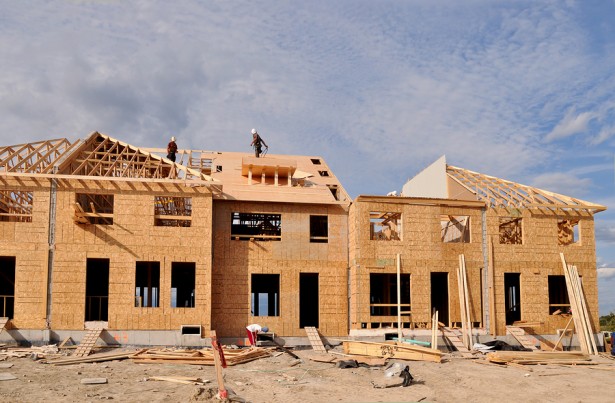Last month, the number of housing starts and building permits declined, but the figures did remain at the same levels on par with the gradual housing market recovery, says a new report by the Department of Commerce.
According to the report released Tuesday, groundbreaking fell 1.6 percent to a seasonally adjusted annual pace of 1.028 million units. Household formation is currently running at approximately half a million per year, which is far below the estimated one million that show a much stronger housing market recovery.
New building permits slipped to a seasonally adjusted rate of 1.035 million, down 5.2 percent from the September rate of just under 1.1 million. Polls of economists projected new permits to reach 1.06 million.
Single-family housing starts dropped to an annualized rate of 677,000 in November, also down more than five percent from the October rate of 716,000. This has been attributed to Americans deciding to continue living with their parents or sharing living quarters with friends and family members.

The housing market has suffered from the lackluster wage growth and tumultuous labor market. In fact, home prices have far outpaced that of wage increases. However, many expect that with an improving economy next year, there will be more employment opportunities and thus wage hikes, which will give workers more money in their pocket and a chance to purchase a home.
Analysts say that it is imperative that the housing market brings in the young people, a group that has been on the receiving end of a terrible economy, and long-term it’s crucial for the millennials to become homebuyers.
“With labor market conditions continuing to be favorable … we believe that it will be only a matter of time before the housing recovery shifts up a gear or two and provides a crucial second wind to the economic recovery,” said Millan Mulraine, deputy chief economist at TD Securities in New York, in an interview with Reuters.
Mark Zandi, chief economist at Moody’s Analytics Inc., told Bloomberg News that a revival in the economy next year should bring in lower mortgage rates, increased access to credit, moderate wage growth and lower unemployment levels. If these factors do transpire then it could contribute to the uptick in housing starts and purchases.
Home builders remain positive that the market is getting better. According to the National Association of Home Builders’ (NAHB) index of builder confidence, it has stood above the 50-point market for six consecutive months, which suggests a majority of builders are upbeat. However, the number of new homes being constructed still remain below pre-recession levels, a time when 1.7 million units were constructed annually.
Moving forward, the biggest factor for potential homebuyers is the cost. Even with mortgage rates going down – the average interest rate on a 30-year fixed-rate mortgage was 3.93% last week – home prices are still astronomical for the average person, particularly millennials, a demographic that is straddled by enormous student debt levels, credit card debt and low-paying jobs.
Will millennials start accumulating assets or continue to stay at home with their parents?




